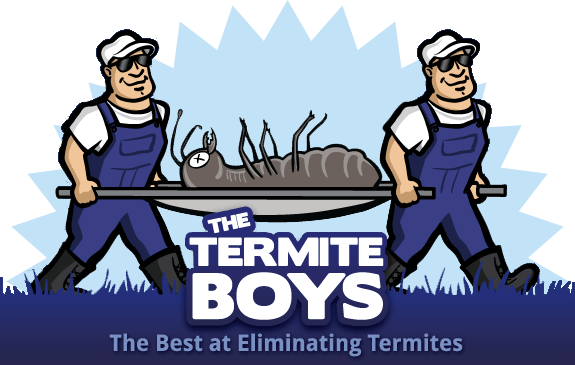Termites may be small, but they can cause colossal damage to homes and properties if left unchecked. Located across the U.S., they’re especially a concern for Massachusetts residents, where specific conditions make homes more vulnerable to termite infestations.
This blog provides an in-depth look at termites in Massachusetts, including the types you might encounter, the damage they can cause, and most importantly, how to prevent and control these pests before they wreak havoc. Whether you’re a homeowner or a renter, you’ll find actionable tips to safeguard your property.
Are Termites Common in Massachusetts?
Yes, termites are a concern in Massachusetts. Although termite activity in this northern state may not be as severe as in warmer climates, it’s a mistake to think homes are immune to infestations. Subterranean termites, in particular, are the primary culprits in Massachusetts and can thrive even in cooler weather.
The state’s damp soil and temperate climate create favorable conditions for termite colonies to build underground nests. Once settled, these pests can infiltrate your home, especially if there’s decayed wood or foundational cracks.
Types of Termites Found in Massachusetts
While there are over 2,700 species of termites across the globe, the ones that Massachusetts homeowners are most likely to encounter belong to one troublesome group:
1. Subterranean Termites
This species is by far the most common in Massachusetts.
- How they live: Subterranean termites build their nests underground, often creating mud tubes to travel undetected.
- Diet: They primarily feed on wood and cellulose-based materials, which can include anything from your home’s framework to paper-based products.
- Damage potential: Annual termite-related property damage in the U.S. totals $5 billion, with subterranean termites being the primary contributors.
2. Drywood Termites (Rare)
Though less of a threat in Massachusetts, drywood termites might occasionally be brought in through imported wood furniture.
- How they live: Unlike subterranean termites, drywood termites don’t rely on soil. They infest wood directly, making furniture a risk.
Focusing on subterranean termites is vital for Massachusetts homeowners, as these pose the greatest threat.
Signs of a Termite Infestation
Detecting termites early can save you thousands in repair costs. Keep an eye out for these common signs of infestation:
1. Mud Tubes
Subterranean termites create these pencil-width tunnels from soil to wood. Check your home’s foundation, walls, and crawl spaces for these tell-tale tubes.
2. Swarmers (Winged Termites)
Spotting flying termites, particularly during spring, is a red flag. These winged termites leave colonies to create new ones and are commonly mistaken for ants.
3. Hollow-Sounding Wood
Tap areas of wooden furniture or structures. If they sound hollow, termites may have already burrowed into the material.
4. Frass (Termite Droppings)
Drywood termites (if present) leave behind small, pellet-like droppings, often found near infected areas.
5. Peeling or Bubbling Paint
This may mimic water damage, but termites chewing through wood beneath the paint can also create this effect.
6. Damaged Wood
Chipped, weakened, or even crumbled wood on window sills, doors, or wooden beams could indicate termite feeding activity.
What Attracts Termites to Massachusetts Homes?
Understanding what lures termites to your property can help with prevention. Termites in Massachusetts are drawn to homes with the following characteristics:
- Moisture
Massachusetts’ humid summers and spring rains create conditions termites love. Leaky pipes, clogged gutters, and poor drainage around the foundation can exacerbate the problem.
- Wood in Contact with Soil
Termites thrive when wood directly touches the ground. Firewood piles, wooden decks, and tree stumps near your home all act as easy pathways.
- Cracks and Gaps
Tiny cracks in your foundation, walls, or around utility pipes are perfect entry points for termites.
- Warmth in Winter
During colder months, termites are drawn to heated homes as a stable environment.
By addressing these attractants, you can minimize the chance of infestation.
How to Prevent Termites in Massachusetts
Prevention is always better (and less expensive) than treatment when it comes to termites. Here are some expert tips to termite-proof your home:
Exterior Prevention Tips
- Grade your yard properly to ensure water flows away from your foundation.
- Store firewood far from your home and keep it elevated off the ground.
- Trim vegetation like shrubs and trees, especially if they’re too close to your exterior walls. Overhanging branches can act as a termite bridge.
- Seal all entry points, including cracks in the foundation and gaps around electrical wiring or plumbing.
Interior Prevention Tips
- Fix leaks immediately to prevent moisture build-up.
- Use dehumidifiers in basements and crawl spaces where humidity tends to accumulate.
- Avoid wood-to-soil contact for flooring, cabinetry, or other wooden elements.
- Inspect wood furniture before bringing it into your home, especially secondhand pieces.
Consistent inspections and professional advice can help ensure termites stay away for good.
What to Do if You Have Termites
If you suspect an infestation, immediate action is crucial to minimize damage. Here’s what to do:
- Call a Pest Control Professional
While DIY treatments may be tempting, termites are hard to eliminate without specialized knowledge. An exterminator will assess the extent of the problem and recommend targeted solutions.
- Use Bait Stations or Treatments
Professionals may install bait traps or use liquid treatments to eliminate colonies. Ensure any chemicals used are safe for your household.
- Repair Damage
Once the infestation is under control, repair any structures or furniture that termites have damaged to avoid further complications.
- Monitor Regularly
Schedule annual inspections with professionals to address any recurring risks.
Termites in Massachusetts are a serious risk to homes, but with proper prevention and early detection, costly damage can be avoided. From understanding the types that pose the greatest threat to implementing effective preventive measures, you can safeguard your property year-round.
If termites are already an issue, don’t wait to act. Reach out to a trusted pest control service to protect your home before the damage escalates.
By staying informed and vigilant, you can enjoy the peace of mind that comes with a termite-free home.

